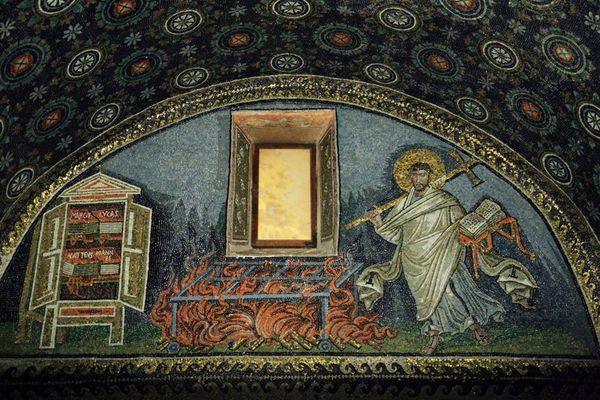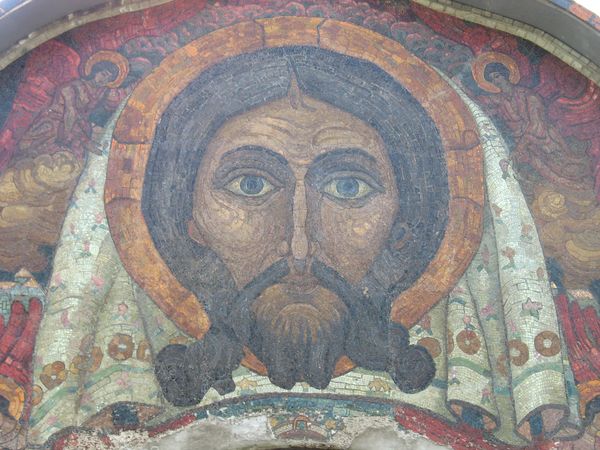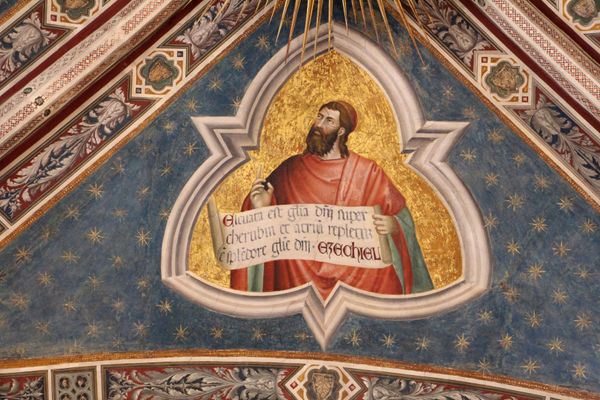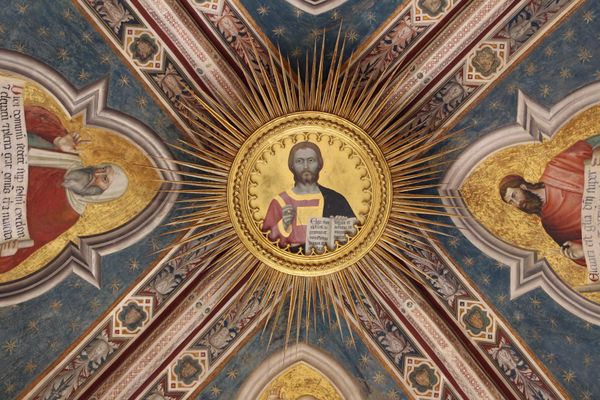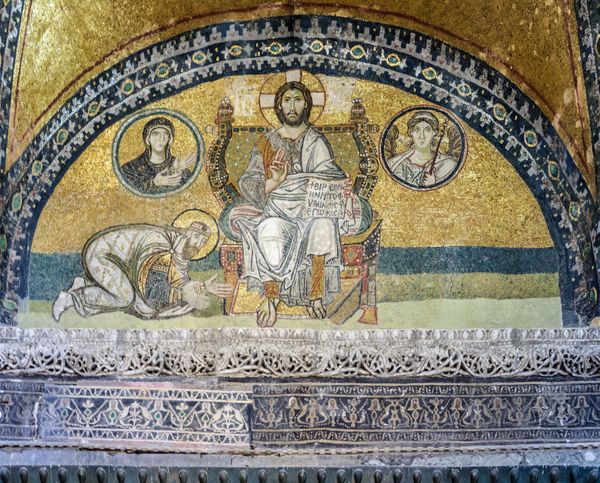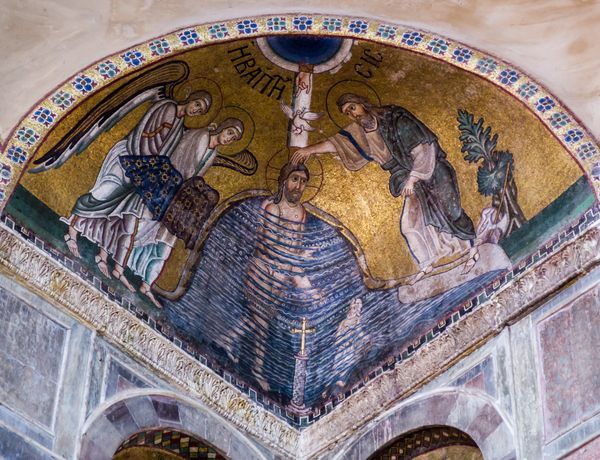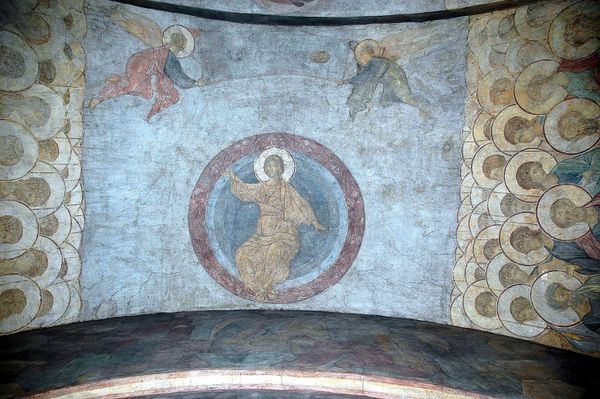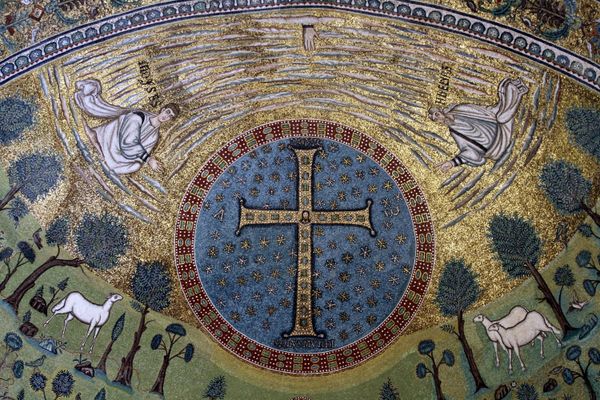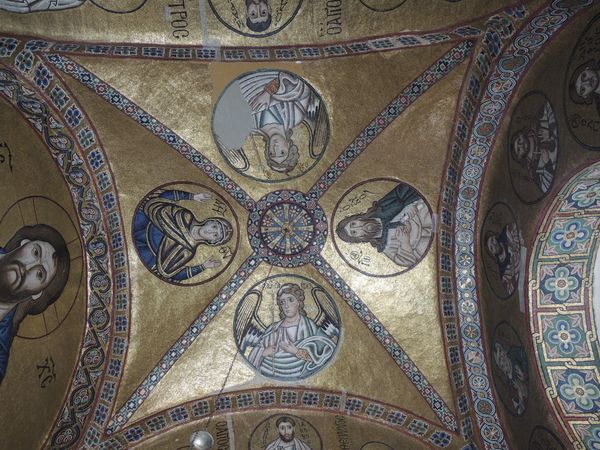
mosaic
#
portrait
#
mosaic
#
byzantine-art
#
medieval
#
holy-places
#
figuration
#
cultural heritage
#
historic architecture
#
text
#
traditional architecture
#
historical building
Copyright: Public domain
Editor: So, here we have the mosaic "Blessing Christ" from 549 AD, located in the Basilica of Sant' Apollinare in Classe. What strikes me is the somewhat rigid composition. What can you tell us about it? Curator: Indeed, its formal rigidity serves to emphasize its symbolic richness. Consider the placement of Christ within the circular frame, reminiscent of the Roman clipeus. What purpose do you think framing Christ serves here? Editor: It kind of singles him out and isolates him from the other figures surrounding him. Curator: Precisely! This visual device elevates Christ, transforming him into a divine figure suspended in eternity. Now observe the figures to either side and also below - notice how all of the animals are holding sacred books like the figure in the middle. That placement, along with Christ gesturing in blessing, is crucial for interpreting its symbolic function as an allusion to sacrifice and renewal. Editor: Renewal, interesting. I hadn't considered that, but sacrifice definitely resonates with the imagery used. Curator: Ask yourself about the enduring power of this image and other images of sacrifice throughout history. This repetition reinforces and deepens its cultural meaning, acting as a key touchstone. These figures aren't only from the bible they represent sacrifice and renewal. What does that provoke within you? Editor: It helps me realize how so much is revealed and reinforced by repeated cultural imagery, both back then and now, it is quite interesting to analyze these works of art and apply to modern society. Thanks! Curator: And understanding those connections is why these works continue to resonate today.
Comments
No comments
Be the first to comment and join the conversation on the ultimate creative platform.

